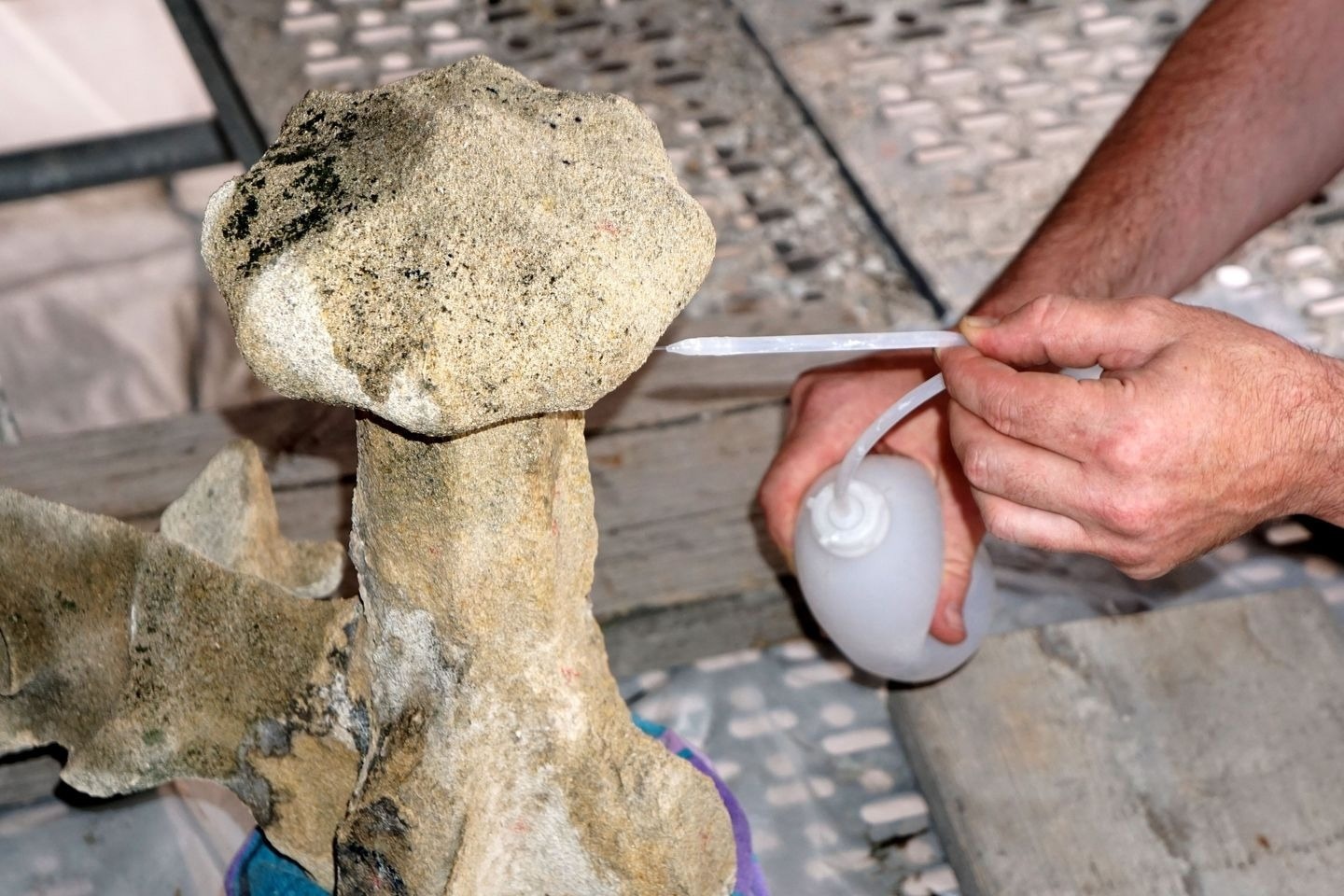Constructions made of porous rock may weather over time. TU Wien (Vienna) researchers have now thoroughly examined how silicate nanoparticles can help save them for the first time.
 Restauration works at St. Stephen’s cathedral in Vienna. Image Credit: © Archiv der Dombauhütte St. Stephan.
Restauration works at St. Stephen’s cathedral in Vienna. Image Credit: © Archiv der Dombauhütte St. Stephan.
Several historical buildings were made of limestone, such as Vienna’s St. Stephen’s Cathedral. Limestone is simple to work with but does not resist weathering well. It comprises primarily of calcite minerals that are comparatively bound weakly to each other. This is why parts of the stone tend to keep disintegrating over the years. This often needs expensive conservation and restoration treatments.
But it is feasible to increase the stone’s resistance by treating it with unique silicate nanoparticles. The technique is already in use, but it has been unclear until now precisely what happens during the procedure and which nanoparticles are most appropriate for this use.
At present, a research group from TU Wien and the University of Oslo has been able to clear up exactly how this artificial hardening process happens through detailed experiments at the DESY synchrotron in Hamburg and with microscopic examinations in Vienna. The team could identify which nanoparticles are ideally suited for this cause.
An Aqueous Suspension with Nanoparticles
We use a suspension, a liquid, in which the nanoparticles initially float around freely. When this suspension gets into the rock, then the aqueous part evaporates, the nanoparticles form stable bridges between the minerals and give the rock additional stability.
Markus Valtiner, Professor, Institute of Applied Physics, Technische Universität Wien
This method has been used in restoration technology, but so far it was not known exactly what physical processes take place.
When the water evaporates, an exceptional kind of crystallization occurs: Normally, a crystal is a regular arrangement of individual atoms. However, not only atoms but also complete nanoparticles could arrange themselves in an even structure-this is then cited as a “colloidal crystal”.
The silicate nanoparticles get together to develop such colloidal crystals when they tend to dry in the rock and thus collectively make new connections between the different mineral surfaces. This helps increase the natural stone’s strength.
Measurements at the Large-Scale Research Facility DESY and in Vienna
For this crystallization process to be observed elaborately, the TU Wien research team utilized the DESY synchrotron facility in Hamburg. Powerful X-rays could be produced there, which can be further utilized to examine the crystallization during the drying process.
This was very important to understand exactly what the strength of the bonds that form depends on. We used nanoparticles of different sizes and concentrations and studied the crystallization process with X-ray analyses.
Joanna Dziadkowiec, Study First Author, Technische Universität Wien
Dziadkowiec is also associated with the University of Oslo.
It was displayed that the particles' size seems crucial for ideal strength gain.
Even so, the TU Vienna also quantified the adhesive force made by the colloidal crystals. For this cause, a unique interference microscope was utilized, ideally suited for quantifying small forces between two surfaces.
Small Particles, More Force
We were able to show: The smaller the nanoparticles, the more can they strengthen the cohesion between the grains of minerals. If you use smaller particles, more binding sites are created in the colloidal crystal between two grains of minerals, and with the number of particles involved, the force with which they hold the minerals together thus also increases.
Joanna Dziadkowiec, Study First Author, Technische Universität Wien
Furthermore, how many particles are present in the emulsion is significant.
“Depending on the particle concentration, the crystallization process proceeds slightly differently, and this has an influence on how the colloidal crystals form in detail,” stated Markus Valtiner.
The study's outcomes will be utilized to make restoration work more targeted and highly durable.
Journal Reference:
Dziadkowiec, J., et al. (2022) Cohesion Gain Induced by Nanosilica Consolidants for Monumental Stone Restoration. Langmuir. doi.org/10.1021/acs.langmuir.2c00486.